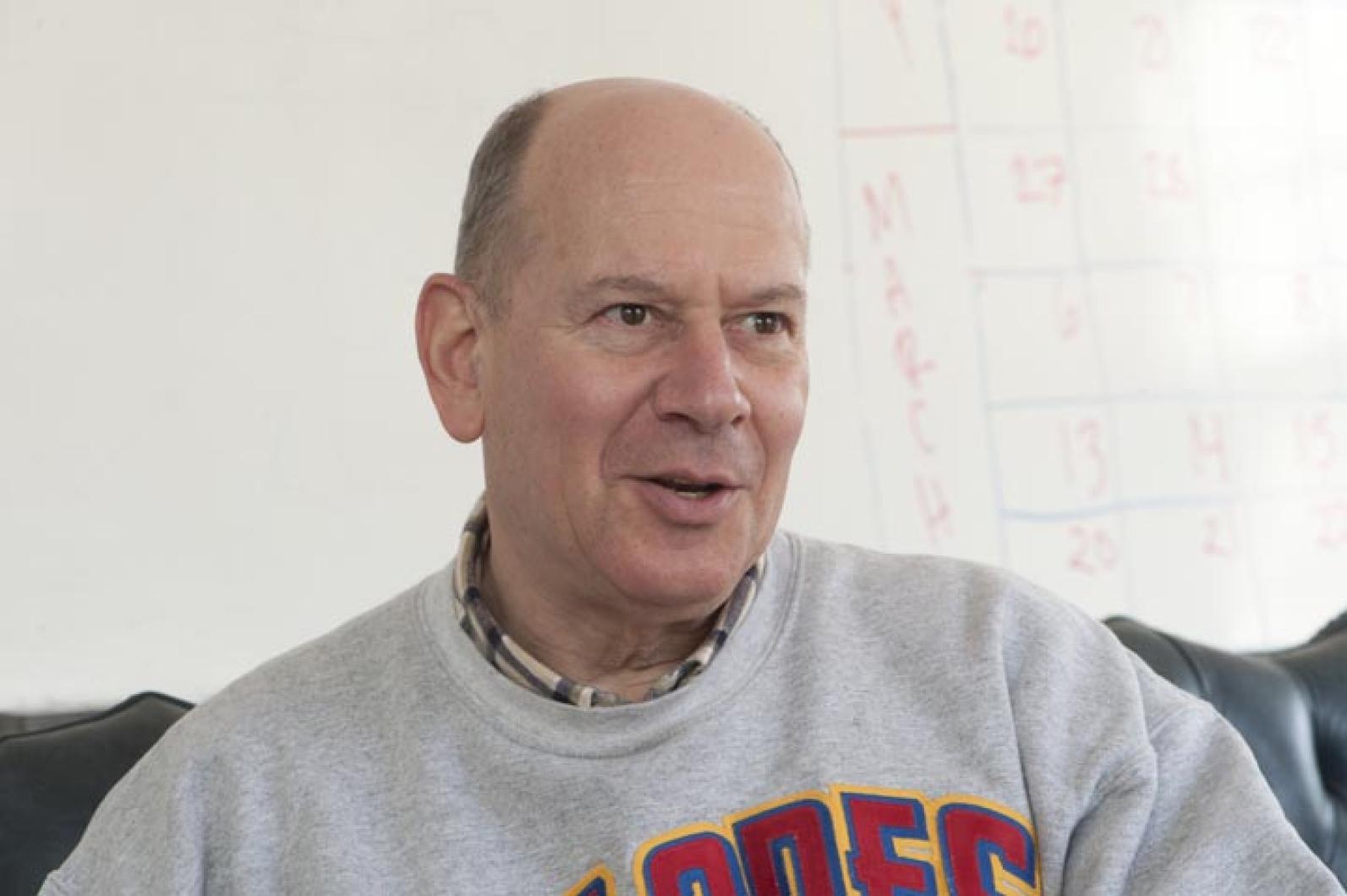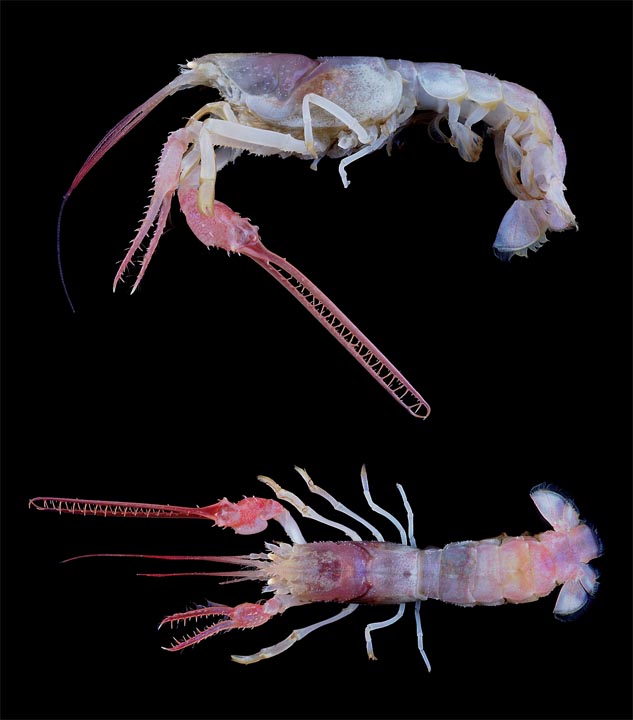The ever-expanding pantheon of documented life on earth has welcomed a new creature to its ranks: the Dinochelus Ausubeli, or Ausubel’s mighty claw. The bizarre lobster is rather unexceptional save for one feature: a comically oversized right claw. Although you have to squint to see the resemblance, Ausubel himself — Jesse Ausubel of Vineyard Haven, to be exact — is flattered to be represented by the intimidating creature.
“If someone names a sponge after you or if someone names a jelly after you, you always have to wonder, is this an honor?” Mr. Ausubel said in an interview yesterday. “Not that many new lobsters are discovered so certainly I was tremendously honored.”
The striking animal, discovered at a depth of 900 feet off the Phillipines, is one of nearly 6,000 new species uncovered in the 10-year, $650 million dollar effort to document all of the life in the ocean, known as the Census of Marine Life. Mr. Ausubel was a cofounder of the project that rivals only the great enlightenment and Victorian expeditions of the HMS Challenger or of Alexander Von Humboldt for scope and ambition. The similarities across centuries are not lost on Mr. Ausubel.
“The age of exploration is not over,” he said. “Most of the ocean even after the census [which ended in the fall] is unexplored, so a lot of the spirit was in some ways more like what you may remember reading about explorers and scientists from a prior time. But it was combined with very high-tech, 21st century science in terms of genetics, in terms of acoustics and in other fields.”
Even though his team has compiled a list of what he says will ultimately number roughly 250,000 species, Mr. Ausubel estimates there are more than 750,000 species yet to be discovered. And if the mind of the creator can be divined from his works, to paraphrase the naturalist J.B.S. Haldane, he has an inordinate fondness for marine worms: Mr. Ausubel surmises that there may be up to 200,000 species of the invertebrates still unknown to science.
To the general public the project’s most visible presence has been in the flood of pictures over the past decade exhibiting the range and inventiveness of evolution, from the furry outstretched arms of the yeti crab to the startling otherworldliness of the deep-sea bigfin squid. As the census demonstrated, human artistry is ill-equipped to compete with the variation and elegance of form in the natural world.
“It documented diversity beyond imagination,” Mr. Ausubel said.
The census also documented a previously unappreciated connectedness of the ocean, both horizontally and vertically — from the cosmopolitan commutes of the bluefin tuna from L.A. to Tokyo or Havana to Sicily, to the Herculean efforts of some species of shrimp that daily ascend and descend the height of the Eiffel Tower in search of food.
Apart from the almost unimaginable logistical undertaking of coordinating some 500 expeditions over a decade, there were also the international implications of the worldwide effort. Mr. Ausubel was often forced to straddle diplomatic gulfs, forcing otherwise unfriendly governments — the United States and Venezuela for example — to work in tandem. Perhaps even more challenging was uniting the scientists themselves.
“There’s rivalry between arctic and antarctic people, there’s rivalry between polar people and tropical reef people, there’s rivalry between deep-sea people and near-surface people, there’s rivalry between the people concerned with the big charismatic animals and the people who are interested in marine microbes,” he said. “It was sort of a your-animals-eat-my-animals thing.”
The sheer scope of the project caused many of these previously hostile camps to come together.
“No group of people had ever tried to look at everything in the oceans before, from microbes to mammals, from nearshore to midocean, from sea floor to sea surface and even seabirds, and somehow it clicked,” he said. “People said I want to be a part of this, I don’t want my animals to be left out.”
The census also sought to establish a historical baseline. While anthropologists reconstructed ancient diets by studying midden piles, a team of historians perused the records of Russian czars and 19th and early 20th century restaurant menus from Boston, New York and Philadelphia to establish an index of the historical abundance of life in the ocean. When compared with modern levels, the results are often discouraging.
“Sadly the census documented these very dramatic changes in abundance in most of the species that enter commerce,” Mr. Ausubel said. “If sea life becomes seafood or is used to make buttons or oil, in almost all cases you find tremendous declines in the populations, often 90 per cent.”
But all is not gloom and doom. If left alone, Mr. Ausubel says life can recover from catastrophic collapses, although often in a diminished or altered form.
With the census over, Mr. Ausubel calls 2011 his “year of digestion.” Results must be sifted, documented and consolidated as thousands more animals await official recognition from the scientific community. As Mr. Ausubel turns his attention toward an international effort to pause all forms of human-created noise in the oceans for a few hours, he says he will miss the field work of the census most — from moonlit reef-diving in New Caledonia to ice-breaking in the perpetual twilight of the arctic.
“Sometimes you do wonder why am I working 80 or 90 hours a week, week after week, month after month,” he said. “But emotionally the power of the oceans, the beauty of the oceans, they replenish you. All of us who work on the ocean treasure the time with the sea. It refreshes your spirit and your commitment to your work.”
The census has answered many questions about the oceans and perhaps raised even more, the most pressing of which may be, what is with Dinochelus Ausubeli’s giant claw?
“They’re like chopsticks,” he said. “If you’re sitting waiting for something and you can reach far you can get to more groceries.” As he spoke he animatedly mimicked the grasping motion of his lobster, for a moment gaining more of a resemblance to the animal with whom he now shares a name.







Comments
Comment policy »